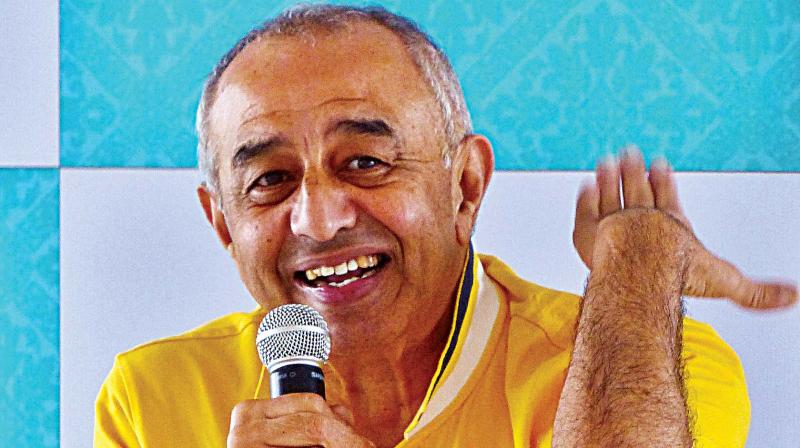Carving a niche in contemporary dance against all odds

Bengaluru: It is, perhaps, the responsibility of the artiste, to boldly venture where nobody has dared to go. And as any artiste worth his salt will tell you, there is no shortcut. That certainly was the case with Astad Deboo, the legendary artiste who is credited with being the father of contemporary dance in India.
“The journey was a struggle,” he said. Despite having supportive parents, who stood by him as society scoffed, Deboo set out to make a name for himself in a country besotted with its classical traditions.
“It was a difficult journey. I had to convince presenters to let me present and I had to convince audiences, too.” In the West, he found a whole new challenge - he came from a land that had no culture of contemporary dance. “Even now, despite my reputation and my success, I feel like I have to start from scratch with every performance,” he said.
This week will mark Deboo's first solo show in India in over a decade. Eternal Roads is a 60-minute interpretation of the Sufi master Bullhe Shah's Maati (Dust), which was first commissioned last year by the Metropolitan Museum of Art in New York. Why Bullhe Shah? "Why not?" he laughed, going on to say, “I was asked to do something that would complement the Islamic section of the museum. Rumi had already been done and I wanted something new.” It was a friend who recommended Bullhe Shah, sending Deboo a couple of poems to read.
Maati is an extraordinarily introspective piece, as Bullhe Shah's work is wont to be, although Deboo responds wonderfully to the abstract. For Eternal Roads, he works with Japanese composer Yukio Tsuji. “The organiser at the Met were sceptical,” he admitted. “This is a Sufi work, can a Japanese composer keep up?” He did, as it happens, with aplomb. “The piece came together in three weeks.”
The show was very well received in New York, as Deboo puts it – “There was pin drop silence. No ringing of cellphones, not even a murmur.” The Indian version is longer – “In Europe, it's acceptable to present a 40 minute piece. I couldn't bring myself to do that in India, though.” The music score has changed entirely too, at the behest of Tsuji, whom Deboo refers to with propriety as Tsukio-san.
“He decided the music wasn't working, so he changed it.” Tsukio is a one-man army, juggling between the flute, keys and drums, all performed live, through the performance. Indian contemporary dance, he said, has come a long way. "Even so, there are very few people working toward advancing it." He refers to the younger generation as "the microwave" - "They want everything to be immediate," he remarked later.
“I ask them what they have trained in and the answer is contemporary dance. You need more than that. You need technique, a vocabulary. You need to have a trained body.” He demonstrates as he speaks, dipping into a low back bend, then balancing gracefully on one foot. “I can do this now, but it requires a great deal of concentration. A dancer needs to learn about his or her body. Being an artiste takes discpline, training and failure. There is no other way,” he observed.
Is government funding for the arts enough? “The government does help, even if it is small. Perhaps that can’t be helped. There are many dancers and a very small pie. I suppose that holds true of every art form,” he said.

